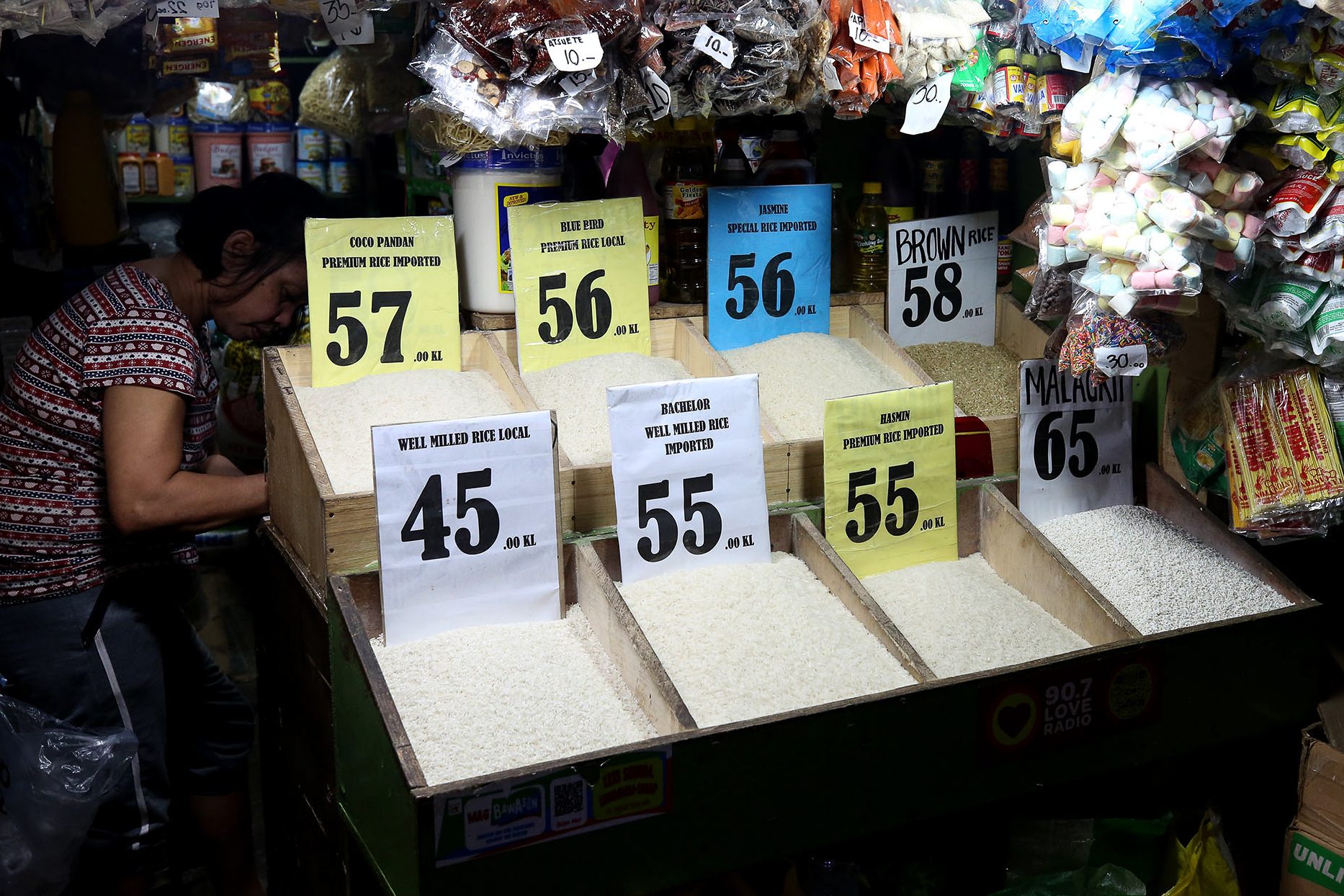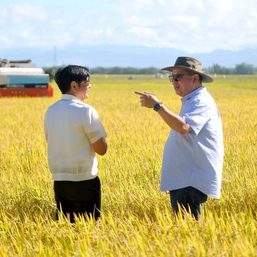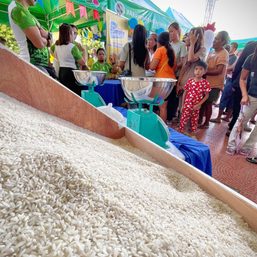SUMMARY
This is AI generated summarization, which may have errors. For context, always refer to the full article.

MANILA, Philippines – The Department of Agriculture (DA) expects an increase in the Philippines’ rice self-sufficiency ratio within the year, Arnel de Mesa, the agency’s spokesperson told reporters on Monday, October 16.
The Philippine Statistics Authority reported a drop in rice self-sufficiency ratio at 77% in 2022, continuing the downtrend from 85% in 2020 and 81.5% in 2021.
De Mesa said the decrease in self-sufficiency in the basic staple could be due to the rise in cost of inputs in 2020 and 2021.
“But this year, we’re expecting na bumangon na siya dahil una, lumaki na ulit ‘yung ating area. Pangalawa ay malaki na rin ang binaba ng cost of inputs, especially fertilizers,” De Mesa said.
(But this year, we’re expecting it to rise. Firstly, because our [rice production] area grew. Secondly, because there has been a big drop in cost of inputs, especially with fertilizers.)
Rice self-sufficiency is the ability of a country to meet the demands of its population for the staple with local rice production.
A 100% rice self-sufficiency in the near future would be a very difficult goal, said De Mesa. Midyear, President Ferdinand Marcos Jr. set a 97.4% target in rice self-sufficiency by 2028.
“Hindi naman in-e-expect na in a few years na hundred percent na tayo (We’re not expecting to hit 100% in a few years),” he said.
De Mesa did not specify a target for next year.
“It’s very difficult i-attain mo ‘yung 100% dahil marami pang kailangang gawin (It’s very difficult to attain 100% because there’s still a lot to do),” he added.
During the lean months this year, rice prices rose, prompting Marcos to temporarily set a price cap on regular and well-milled rice in September. He lifted the cap a month later. Rice inflation, meanwhile, hit a 14-year high last September.
The “shortage” put a spotlight on government’s tied hands on rice importation while a deregulated industry thrives under the Rice Tariffication Law.
Corn, another staple crop in the country, saw a drop in self-sufficiency ratio at 89.9% in 2022 from 94.8% in 2021. – Rappler.com
Add a comment
How does this make you feel?
![[In This Economy] Prices accelerating again under Marcos’ watch, and rice is the culprit](https://www.rappler.com/tachyon/2023/10/TL-price-accelerating-marcos-rice-October-6-2023.jpg?fit=449%2C449)






![[ANALYSIS] How one company boosts farmer productivity inside the farm gate](https://www.rappler.com/tachyon/2024/06/bioprime-farmgate-farmer-productivity-boost.jpg?resize=257%2C257&crop=465px%2C0px%2C1080px%2C1080px)


There are no comments yet. Add your comment to start the conversation.